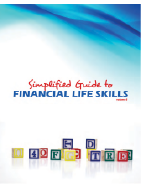If you decide to change insurers make sure that you cancel your current policy. Send the company a letter requesting the termination of your policy with the date that you want the coverage to end. Then follow up with them to make sure that they received it and it has been applied. Do not terminate your coverage by discontinuing to pay the bill. The insurance company will drop you, but it will be reported on your credit as a nonpayment. You may have to provide your former insurer with proof of the new insurance coverage. You will also want to double check when your new policy starts so there isn’t a lapse that could leave you uninsured.
There are a few types of coverage that you can choose depending on your individual circumstances.
Required:
Liability – This is the minimal amount of coverage you need and it is required by every state. This is coverage for any damages or injuries that are caused by you while driving.
Optional:
Full Coverage/Comprehensive – Covers your vehicle, up to book value, for damage you cause. If you have an older vehicle, you may not want to have full coverage, as the monthly premiums are probably not worth the value of the vehicle. Comprehensive also applies to other damage to your vehicle like natural disasters or vandalism.
Medical – Covers the medical treatment for you and your passengers if you are in an accident.
Uninsured/underinsured drivers – This applies if you are in an accident with someone who does not have insurance or enough to cover all damage and injuries. This may be an easier way to collect money when an event like this happens. If not, it can cost you a lot more to try and take it to court to collect from the uninsured driver.
Here are a few other ways that you can save on your insurance. Contact your insurer to see if these or other discounts apply. You may be able to save if you drive a vehicle with better safety standards. Some examples may be automatic seat belts or air bags.
There are a few savings for teen drivers as well. Reporting good grades can save you on your insurance. If your child has taken and passed a driver training course they may qualify for lower rates. The best way to save money is to have a clean driving record. Avoid speeding, running stop signs, tailgating, and be a defensive driver. Always be aware of the drivers around you. You may consider yourself a great driver but there are plenty who are not and you can get caught up in their mistakes.
Even if you have had infractions in the past, if it has been a few years since your last incident you should ask if there are any discounts.
When finances are tight it may be easy to choose not to be insured, but the amount you pay monthly is easily justified if you are ever involved in an accident. So make sure that you have a good policy and don’t be afraid to shop around to make sure that you are getting the best deals possible.









